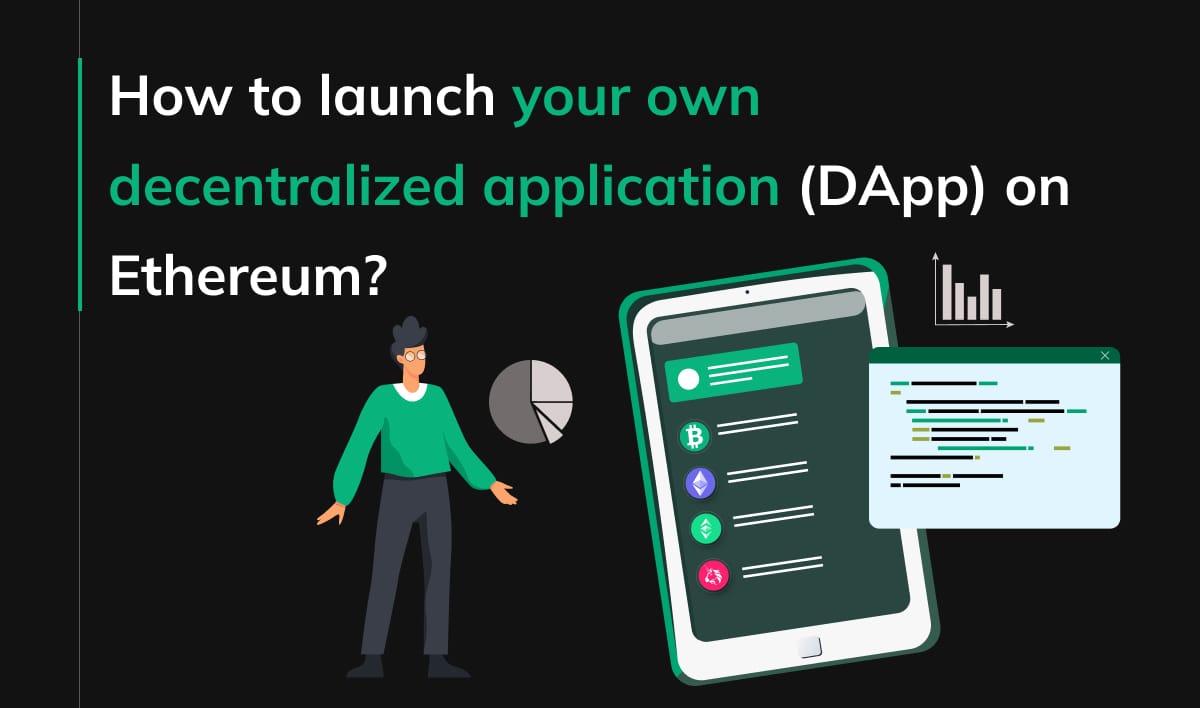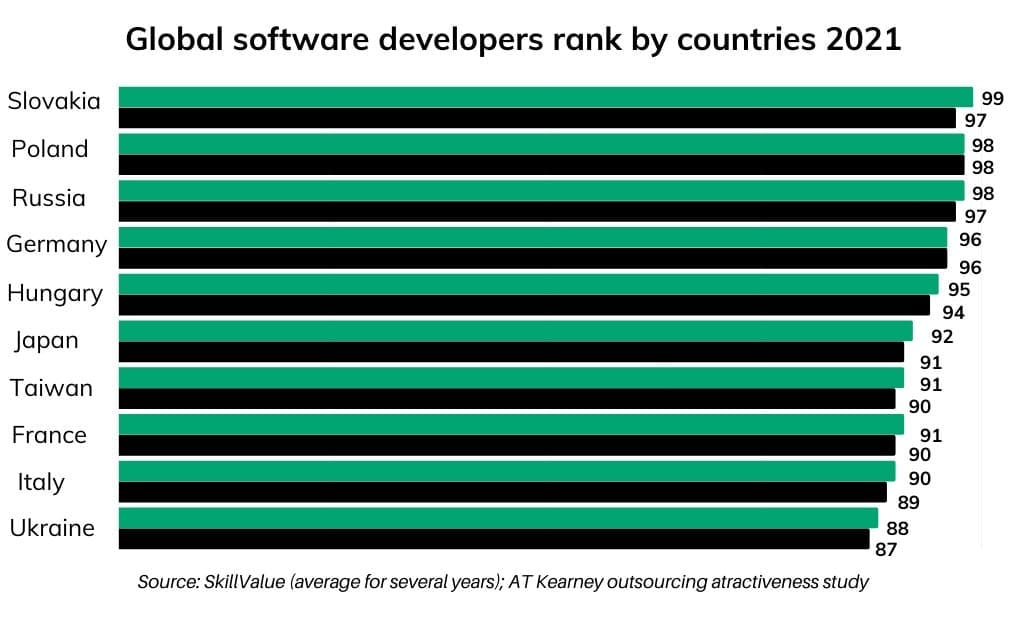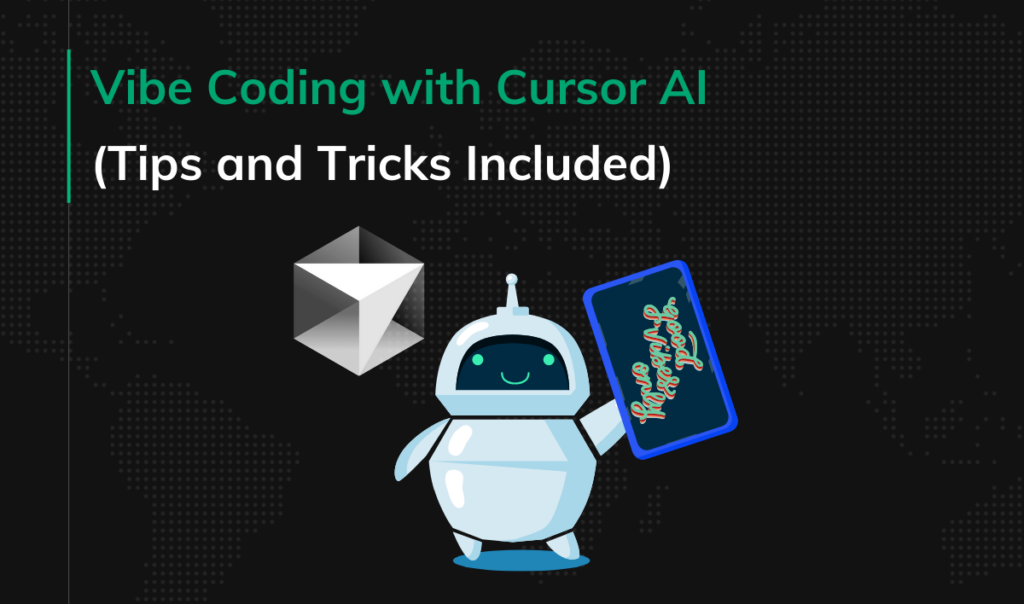How to launch your own decentralized application (DApp) on Ethereum?

Blockchain technology has experienced enormous growth in recent years. The world has been introduced to smart contracts mainly through dozens of applications running on the Ethereum platform. Successful smart contracts projects like Aave, Compound, and Open Sea are grabbing the attention of fortune-seeking blockchain developers, investors, and institutions.
If you already have a startup idea in your mind and want to launch your own project with a token to finance it, read this article.
Ethereum as a Blockchain Platform
Blockchain platforms allow developers to create and run smart contracts. Ethereum is the first and the biggest blockchain platform that can execute arbitrary code so that you can perform any program on Ethereum.
The Ethereum Blockchain is a distributed infrastructure (like Android, and iOS platforms for mobile apps) that enables you to complete projects using smart contracts.
- Create your cryptocurrencies
Using Ethereum, you can create a tradable token that you can use as a new currency. Tokens created with the Ethereum platform use a standard coin API to be compatible with any Ethereum blockchain wallet. - Develop virtual organizations
You can write a smart contract to build a blockchain-based organization. You can then add more people to your organization and enable voting rules. Members of your organization can vote and if it reaches the required number of votes, the smart contract executes automatically. - Build dApps
Ethereum allows developers to develop secure and fault-tolerant decentralized apps that eliminate intermediaries and offer transparency. - Raise funds
You can also use Ethereum smart contracts for fundraising. With Ethereum, you can write a smart contract and a deadline. In case you fail to accomplish the goal, all donations will automatically be reimbursed to donors without disputes or commissions.
Some basics to start.
Decentralized applications (DApps) – are applications that run on the blockchain. Or in other words, they use a peer-to-peer network of computers, or nodes, that communicate with each other. The biggest plus is that the stored data is put on a so-called public ledger that records everything in a secure and transparent way and guarantees no one can manipulate it. Just like the traditional, centralized applications, Ethereum DApps also consist of the backend (the logic) and frontend (the visual) parts. The most significant difference is that the core of the backend is blockchain technology. The instrument which is able to manage and rule the blockchain system is smart contracts. And here comes the point where we’ll start our actual developing part.
Tokens in the Ethereum ecosystem – represent any fungible and tradable goods like coins, loyalty points, in-game items, and more. Since all tokens implement some basic features in a standard way, this also means that your token will be instantly aligned with the Ethereum wallet and any other client or contract that uses the same standards.
Smart contracts are where all the business logic of our application lives. Smart contracts are simply programs stored on a blockchain that enable users to exchange money and property or perform other actions among a group of users, such as voting without any central authority.
From a technical point of view, they are stand-alone scripts written in Solidity, compiled into JSON, and deployed to a particular address on the blockchain. Just like we can call a URL endpoint of a RESTful API to run some logic through an HttpRequest, we can execute deployed smart contracts similarly at a particular address by entering the accurate data along with Ethereum to call the compiled and deployed Solidity function.
Smart contracts are deployed to the decentralized database for a fee proportional to the containing code’s storage size. It can also be defined as a collection of code stored in the blockchain network, defining conditions to which all parties within the contract should agree.
So by creating an app on Ethereum, you will develop your own token that users can trade using Smart Contracts.
Solidity is a smart contract programming language on Ethereum. Developed on top of the EVM, it is similar to the object-oriented programming language that uses class and methods. It allows you to perform arbitrary computations, but it is used to send and receive tokens and store states. When it comes to syntax, Solidity is greatly influenced by C++, Python and Javascript so that developers can understand its syntax quickly.
How is it possible to launch an ERC20 token on Ethereum?
First of all, Ethereum is very often equated with a cryptocurrency, such as Bitcoin, but it’s only a half-truth. Ethereum is primarily a system that allows users to build and run applications on their blockchain in the same way software runs on computers or tablets. Such apps can store and transfer data or manage complex financial transactions. This advantage gives users control over their information.
Ethereum network is empowered by Ethereum tokens, its native cryptocurrency like Bitcoin. It allows the other users to buy your tokens (aka invest in your project).
Prototyping and developing your application
We hope that the information above has not scared you. In fact, you don’t need to be a programmer, blockchain expert, or designer to launch your own project.
The whole process of launching your project usually takes several months. There are 3 crucial phases for you:
- Product ideation – standard good idea:)
This is key for every startup project. You must know what you want to create and why you want to create it. It’s also good to have a list of potential features in your mind that will help you talk with blockchain software developers. - Token launch – you prepare basic documentation, marketing, and smart contracts’ setup. It is crucial for financing your project. Crypto space might look a little bit overcrowded – but that isn’t the case if you have a good project, strong communication, and marketing plan.
- Application development – the part when the real coding takes place. Your project is public (website, Github documentation, roadmap, social media) Your token is already on exchanges or dexes sourcing funds for the development.
Some recommendations to consider
- Do market research – analyze the need, demand, and chances of your future project. This is often more than 50% of the success.
- Think about tokenomics – how your project’s token will be distributed to your team, developers, and to the public? What will be the starting price? Should I need to do a pre-launch?
- Think about market timing – financing your project will mostly depend on the sequence of bull/bear bitcoin cycles. For E.g. you don’t want to launch your project tokens in the middle of a bear market. The best scenario is to launch the token when the crypto market is appreciating and then develop the application.
- Find reliable blockchain developers – if you do not have your own development team. This way, you’ll have a chance to focus your efforts and attention on business matters, e.g. token distribution, marketing, PR, and legal staff. There are many software development companies – but not many specialize in the blockchain. The United States has the biggest blockchain development community in the world – but if you don’t want to spend a lot of funds, try to find quality (high standards of work, English skills, top ranks) outside the US market e.g., central or eastern Europe (Slovakia, Poland, Ukraine).





